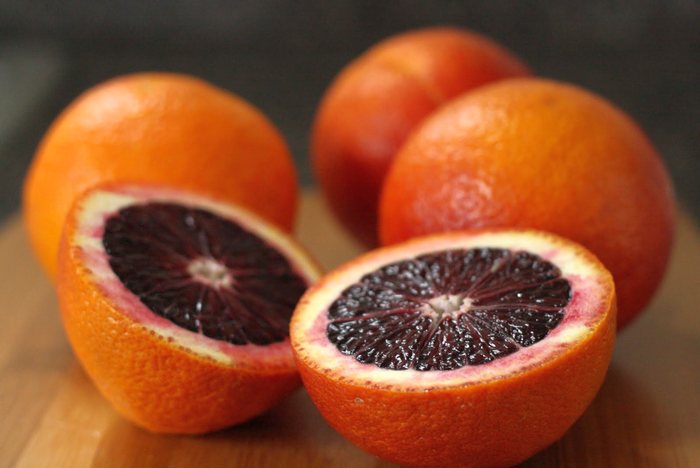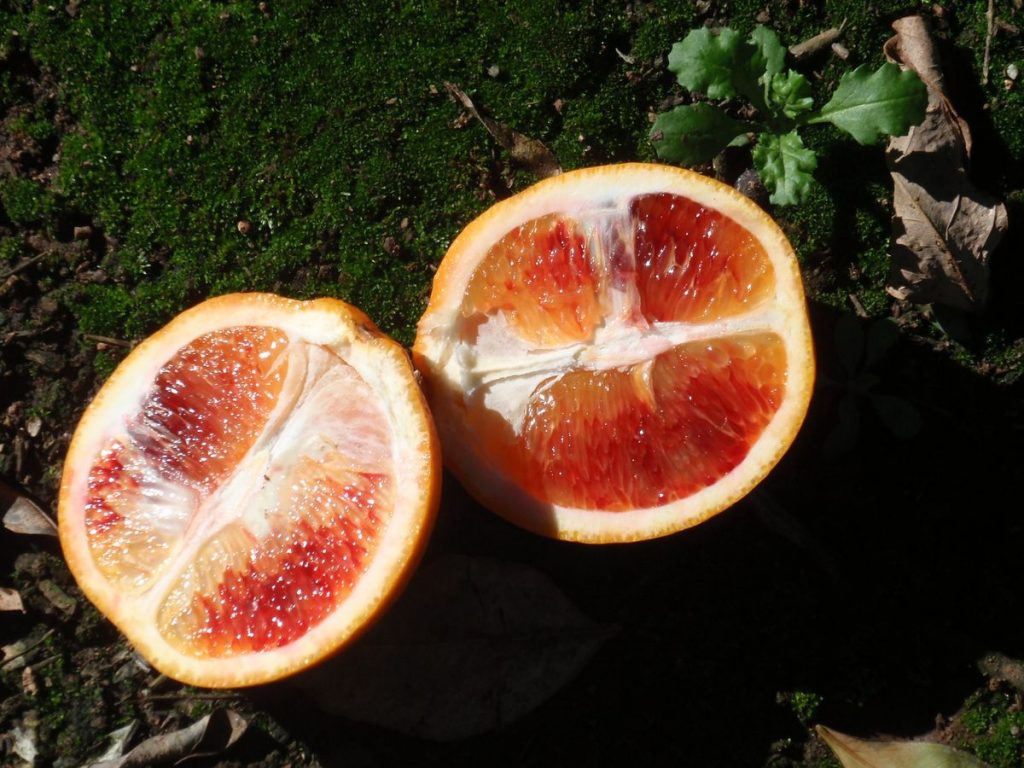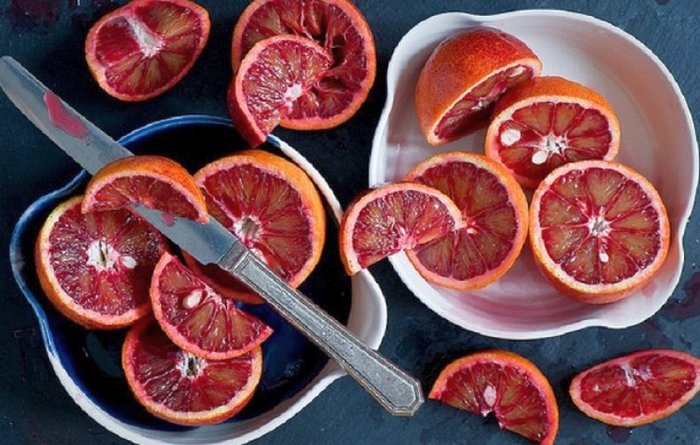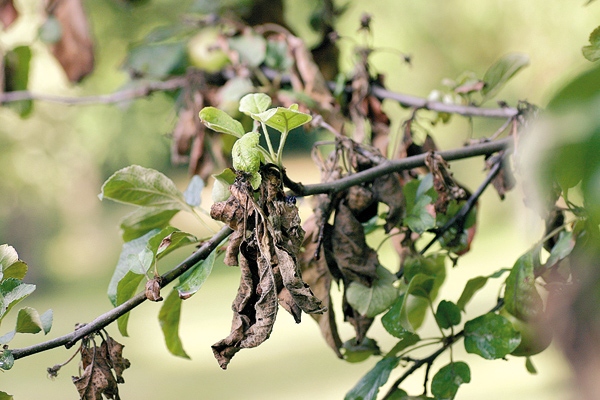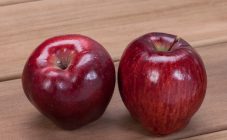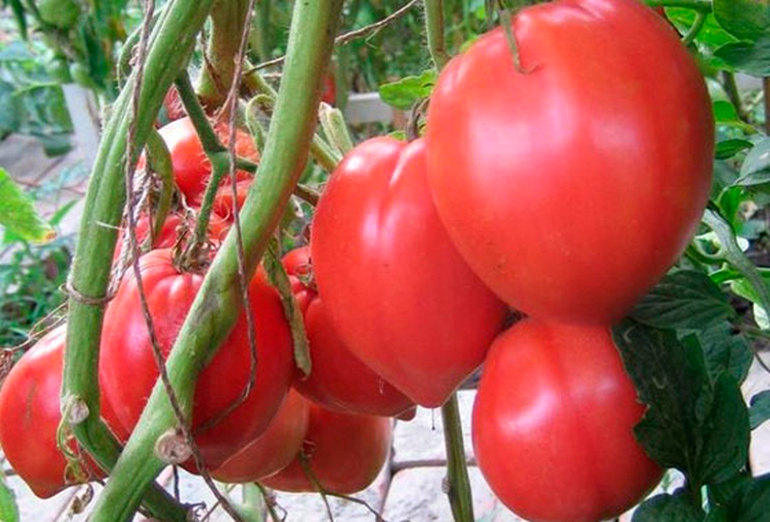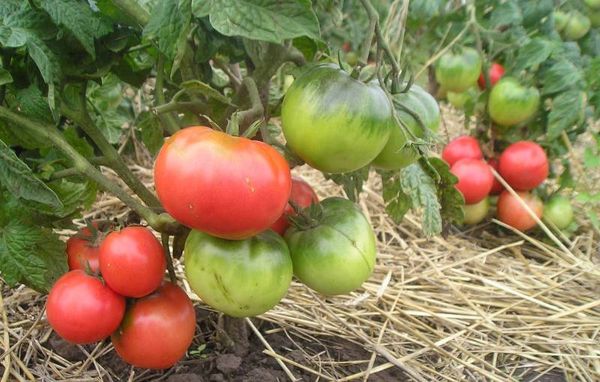Content:
Bloody orange, or red, Sicilian is a representative of the sweet orange, the cultivation of which began in the 15th century.
The red orange owes this name to the unusual color of the fruit, the peel of which, depending on the species, can be brown or dark orange, with red blotches or stripes, and the flesh is orange, burgundy or deep red.
The unusual color is due to the presence of plant pigments, anthocyanins, and its saturation is determined by the conditions of the growing season and the personality of the variety.
Such a significant difference from ordinary oranges raises the question: what is a red orange and a hybrid of what with what. Everything is quite simple - a red orange will turn out if you cross a pomelo and a tangerine.
History of origin
It is believed that the red orange appeared on the island of Sicily and for a long time was grown only there, for which it became known as the Sicilian orange. Today, the territory of distribution of red-veined oranges is quite extensive - they are cultivated in the USA, Italy, Spain, common in Morocco, Tunisia and Malta.
The plant is a small tree with a pyramidal crown and medium-sized fruits (no more than 250 grams), oval, slightly ribbed in shape. The pulp of the fruit is sweet, juicy, with a small amount of seeds, it is easily separated from the peel. Fruits can range from subtle red to purple in color.
Main varieties
The most common varieties of red orange are:
- Tarocco orange. The origin comes from the lands of Francofonte, located in the province of Syracuse. Red orange with round small fruits (150-200 grams), with orange-red pulp and fine fine-grained bright orange with red veins, and at the peak of ripening with bulky spots of skin. The taste of the fruit is sweet and sour with berry notes, the juice is ruby-colored, moderately sour. The fruits are high in vitamin C. Ripening occurs in December and lasts until May;
- Sanguinello (Sanguinello). It was first seen in Spain at the end of 1929. A late-ripening variety with not only red skin, but also red pulp and juice. It begins to ripen in February, the mass harvest is produced in March-April. Oranges are medium in size, spherical or rounded-elongated, the peel is bright orange with a red tint (vaguely reminiscent of rust), easily separated from the pulp. The pulp is intense red, sweet in taste, not sour, there are practically no seeds in it, the juice is orange-red;
- Moro orange - the leader among all other varieties in terms of ripening - begins in December. The fruits are medium in size, oval in shape, covered with a bright orange, reddish peel with voluminous red-violet blotches (at the time of maturity). The graininess of the peel and its thickness are medium, in rare cases there is a small navel. The pulp is dark red, garnet in color, almost black - mainly in the upper lobe, where expressive dark veins stand out. Fruits grow in bunches, very juicy, rich orange flavor, without seeds, dark red juice;
- Pear-shaped beetle - a low-growing plant with small leaves and small pear-shaped fruits (up to 120 grams). The peel is dense, rough, it does not separate well from the pulp. The pulp has a dark cherry color with dark veins and a pleasant sweet and sour orange flavor. There are few seeds in the fruits.
Characteristics of red orange
Varieties differ in terms of ripening, shapes and intensity of colors.
Description of the plant:
- a red orange tree can grow up to 12 meters in height;
- leaves are fleshy, evergreen, they can be different in shape, depending on the variety (small, large, elongated);
- when flowering, the orange becomes covered with pink or white, very delicate flowers, exudes an intense aroma;
- one tree can bear up to 500 fruits;
- oranges with red pulp, red or orange-red peel and the same juice;
- oranges begin to ripen in December-January, depending on the variety, it can be continued until May-June.
The nutritional value
100 grams of fruit contains:
- 87.2 g of water;
- 0.7 g protein;
- 0.2 g of lipids (fats);
- 7.8 g of available carbohydrates;
- 7.8 g of soluble sugars;
- 1.6 g total fiber;
- 1 g of insoluble fiber;
- 0.6 g soluble fiber;
- calorie content - 34-40 (142 kJ).
Beneficial features
The main ingredient in the hybrid orange is vitamin C, which:
- has a beneficial effect on the immune system, strengthening its protective functions;
- is considered an excellent preventive measure against colds;
- promotes the active work of the adrenal glands;
- able to prevent stomach cancer, myocardial infarction;
- increases the level of hemoglobin (helps the gland to be absorbed);
- mitigates the damage from smoking to internal organs.
In addition, each lobule contains B vitamins (B1, B2, B9) and vitamins A, E and P. B vitamins are especially useful during pregnancy - they provide preventive measures for the occurrence of genetic defects in intrauterine development of the fetus. R - increases the elasticity and strength of blood vessels. E - prevents the appearance of varicose veins and prevents cardiovascular anomalies.
The fruits contain useful minerals: Ca, Se, Br, Zn, Fe, Cu, P, Mg, K.
This fruit is effective for:
- varicose veins;
- anemia;
- viral and respiratory diseases;
- alcohol intoxication;
- heart disease;
- bronchitis;
- tuberculosis;
- high blood pressure;
- asthma;
- pneumonia;
- rheumatism;
- overweight.
Medicinal properties:
- Orange juice has a sedative and antidepressant effect, and has anti-inflammatory properties. The pulp contributes to the proper functioning of the gastrointestinal tract, has antispasmodic properties;
- Anthocyanins not only color the orange red, but also act as antioxidants, have anti-aging effects, fight free radicals and remove toxins from the body. Anthocyanins are effective in the fight against excess weight, excellent in reducing the level of bad cholesterol in the blood;
- Terpenes prevent the development of cancer cells, stimulate digestion;
- Lutein, which is part of the fruit, protects against sunlight and ultraviolet radiation;
- Carotene has a positive effect on the eyes.
Dangerous use becomes when:
- childhood (0 to 1);
- chronic diseases of the gastrointestinal tract;
- diabetes mellitus (it is possible to consume a minimum of oranges);
- individual intolerance to citrus fruits;
- 2 trimester of pregnancy and lactation.
Growing
The cultivation of red Sicilian oranges in Russia is practiced only at home. Climatic indicators do not allow growing a bloody orange outside. To grow it at home, the following nuances should be considered:
- The optimum temperature for flowering and fruit set is 18-19 degrees Celsius; for wintering or resting from fruiting, an orange needs a temperature within 12 degrees. Temperatures below 4 degrees are dangerous for the plant;
- Loves light very much;
- Indoor humidity should not exceed 50%;
- Sicilian oranges prefer soil in which moisture does not stagnate: a mixture of turf, sand and humus;
- Acidity indicators - 5.0-5.5 pH;
- You need to feed the orange with nitrogenous fertilizers;
- Nearby plants can easily infect an orange with pests and diseases. For insects, insecticides are used.
Red oranges are unambiguously healthy to consume, they even lead the way over orange in terms of beneficial effects on health. Unusual appearance adds more appeal. The only thing is this "overseas" miracle is extremely rare in our country, and cultivation is possible only at home.
